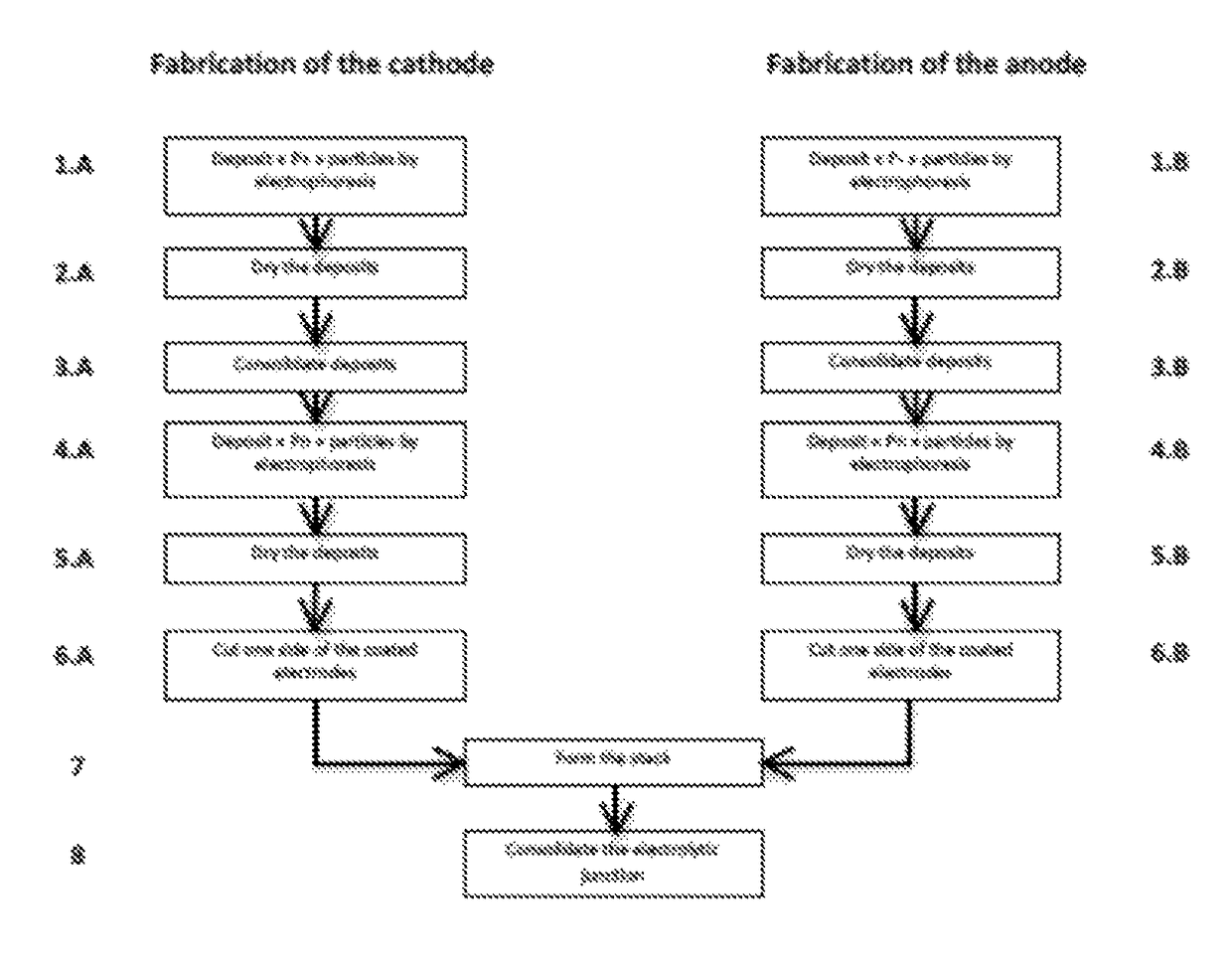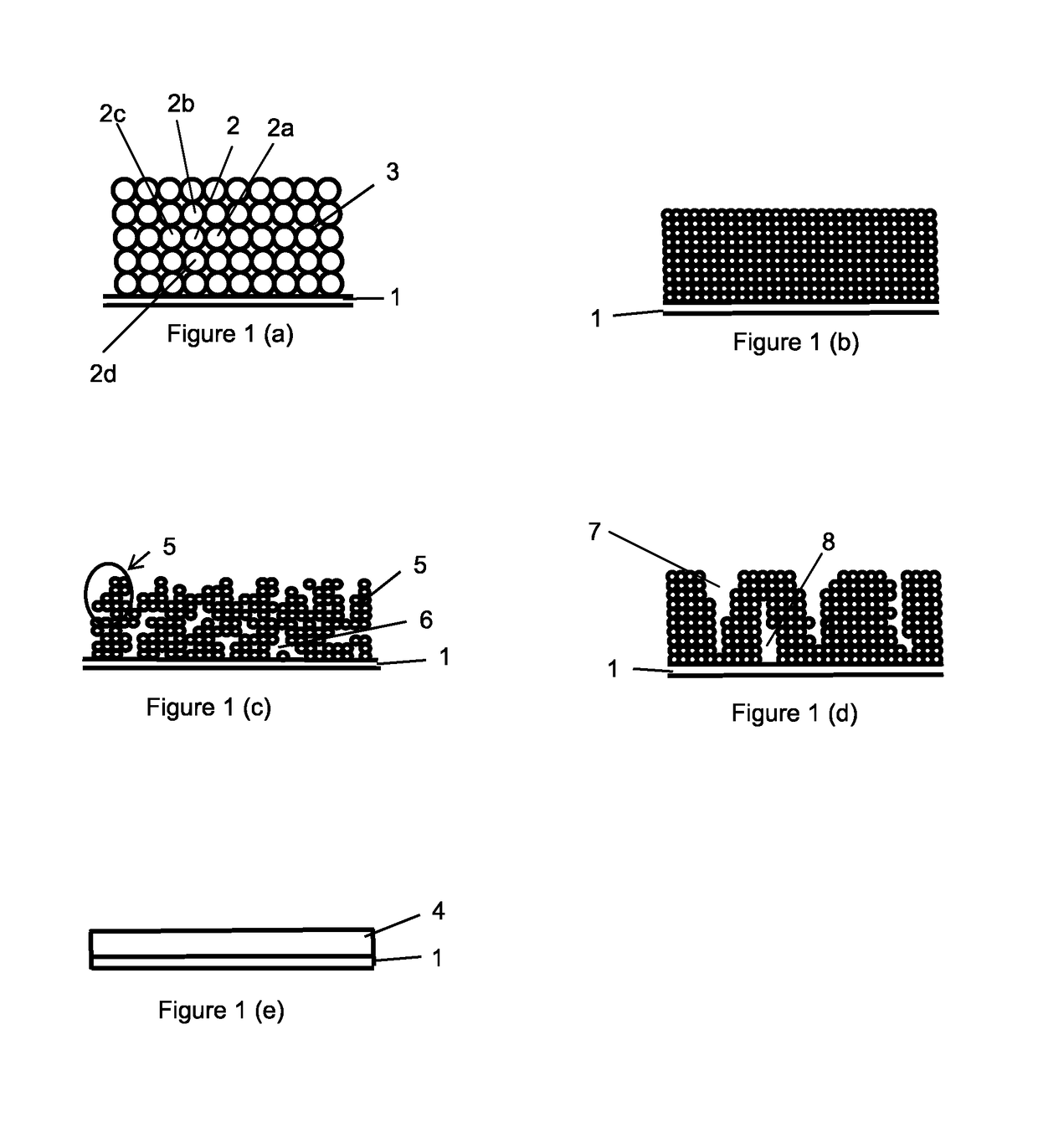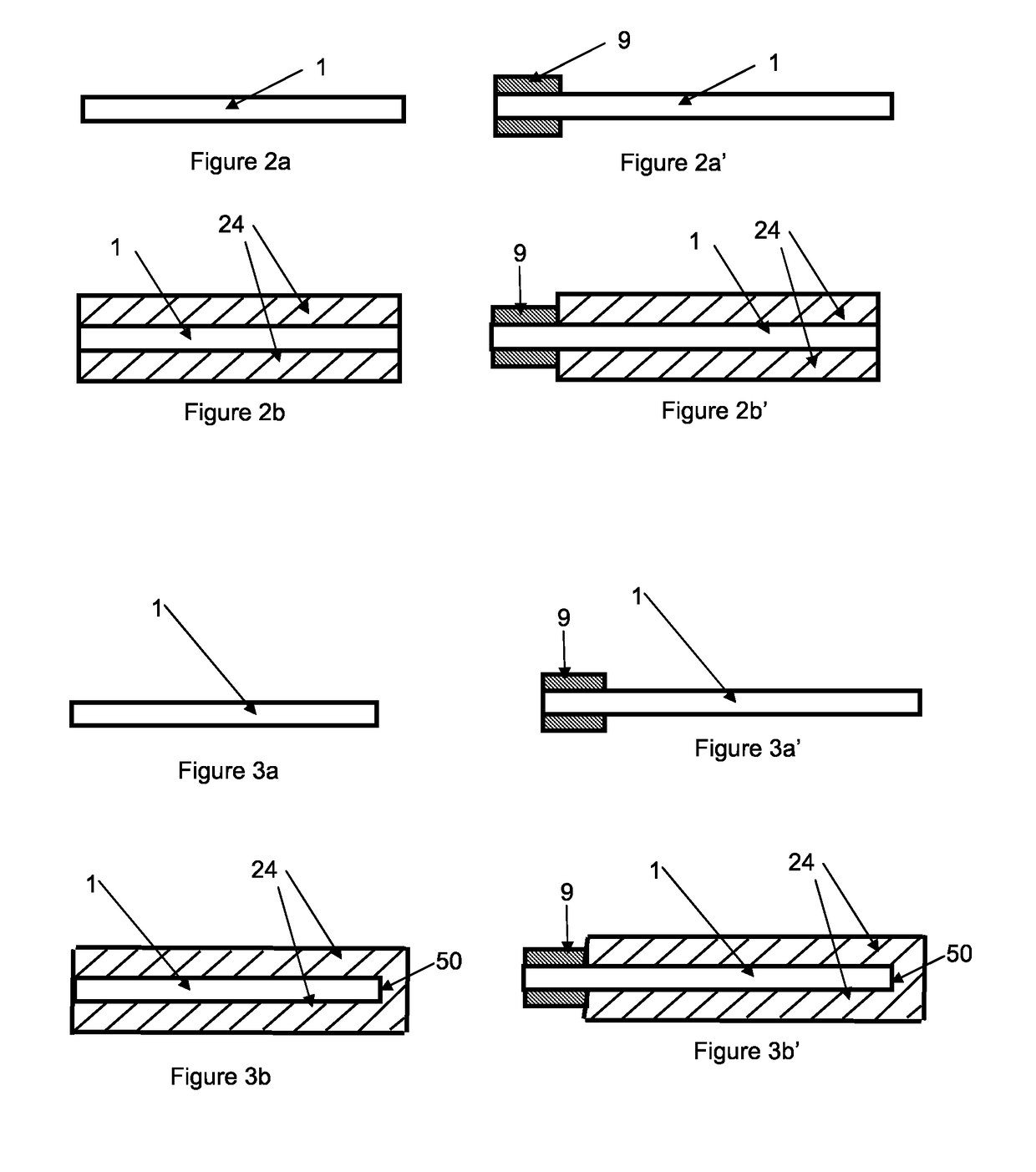Method for the production of electrodes for fully solid batteries
a technology of lithium ion batteries and electrodes, applied in the manufacture of batteries, electrode collector coating, electrode rolling/calendering, etc., can solve the problems of reducing the energy density of batteries, battery cannot function, and the impregnation of electrodes with electrolyte may become difficult or even impossible, so as to increase the ion conductivity of electrodes and increase the electrical conductivity
- Summary
- Abstract
- Description
- Claims
- Application Information
AI Technical Summary
Benefits of technology
Problems solved by technology
Method used
Image
Examples
example 1
Cathode Film
1—Preparation of the SP+ Colloidal Suspension
[0224]A LiMn2O4 powder composed of clusters of nanoparticles is synthesized to obtain the SP+ suspension of P+ particles for the cathode material. This is done using Pechini's method described in the article “Synthesis and Electrochemical Studies of Spinel Phase LiMn2O4 Cathode Materials Prepared by the Pechini Process”, W. Liu, G. C. Farrington, F. Chaput, B. Dunn, J. Electrochem. Soc., vol. 143, No. 3, 1996. After the calcination step at 600° C., the powder contains clusters with a size of between 50 nm and 100 nm.
[0225]This powder is then put into suspension in ethanol at a concentration of 20 g / l.
[0226]The SP+ suspension is added into the bowl of a ball grinder previously filled with 0.1 mm diameter ceramic balls. Grinding for 2 hours in the presence of polyacrylic acid that acts as a complexing agent results in a colloidal solution with particles with size (D50) equal to 30 nm. The zeta potential of the suspension is equa...
example 2
Suspension of Cathode Particles and Deposition of a Cathode
[0228]Nanometric powders of LiMn1,5Ni0,4Cr0,1O4 were synthesized as described in example 5a below. These nanopowders were ground and dispersed in alcohol to obtain a 20 g / l suspension of LiMn1,5Ni0,4Cr0,1O4. Grinding-dispersion was continued until the size of particles in suspension was 30 nm. This suspension was then diluted in a ketone-based solvent to obtain a 5 g / l suspension. The deposition conditions were 70 V / cm, which gave a deposit about 1 μm thick after only a few seconds of anaphoresis.
example 3
Anode Film
1—Preparation of the SP− Colloidal Suspension
[0229]Initially, a Li4Ti5O12 powder composed of nanometric sized particle clusters is synthesized using the process described in the article “Phase-pure nanocrystalline Li4Ti5O12 for a lithium-ion battery” by M. Kalbac et al., J Solid State Electrochem (2003) 8: 2-6. The synthesis is done by mixing a solution of LiOEt at 0.9M and titanium butoxide (IV) in ethanol, under argon. The mix is made with the stoichiometric ratio of Li / Ti=4:5. The solution obtained is then hydrolyzed with an aqueous solution at 4% of polyethylene glycol. The mix is then mixed for 11 hours before being evaporated at 40° C. to obtain a viscous paste. An Li4Ti5O12 powder is obtained after calcination at 500° C.
[0230]This powder is then put into suspension in ethanol at a concentration equal to 20 g / l. The suspension is added into the bowl of a ball grinder previously filled with 0.1 mm diameter ceramic balls. Grinding for 3 hours in the presence of a few m...
PUM
| Property | Measurement | Unit |
|---|---|---|
| particle size | aaaaa | aaaaa |
| thickness | aaaaa | aaaaa |
| thickness | aaaaa | aaaaa |
Abstract
Description
Claims
Application Information
 Login to View More
Login to View More - R&D
- Intellectual Property
- Life Sciences
- Materials
- Tech Scout
- Unparalleled Data Quality
- Higher Quality Content
- 60% Fewer Hallucinations
Browse by: Latest US Patents, China's latest patents, Technical Efficacy Thesaurus, Application Domain, Technology Topic, Popular Technical Reports.
© 2025 PatSnap. All rights reserved.Legal|Privacy policy|Modern Slavery Act Transparency Statement|Sitemap|About US| Contact US: help@patsnap.com



